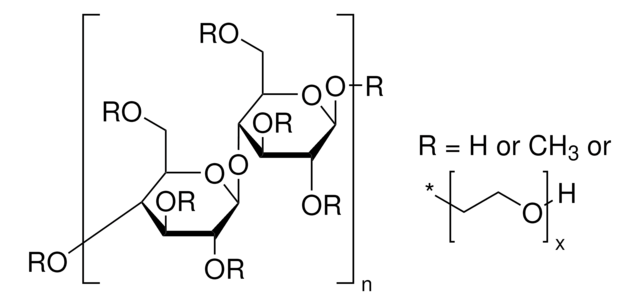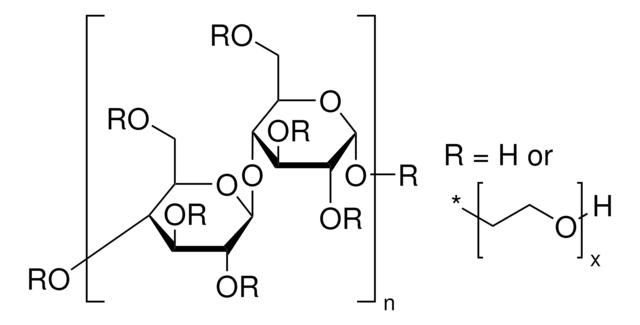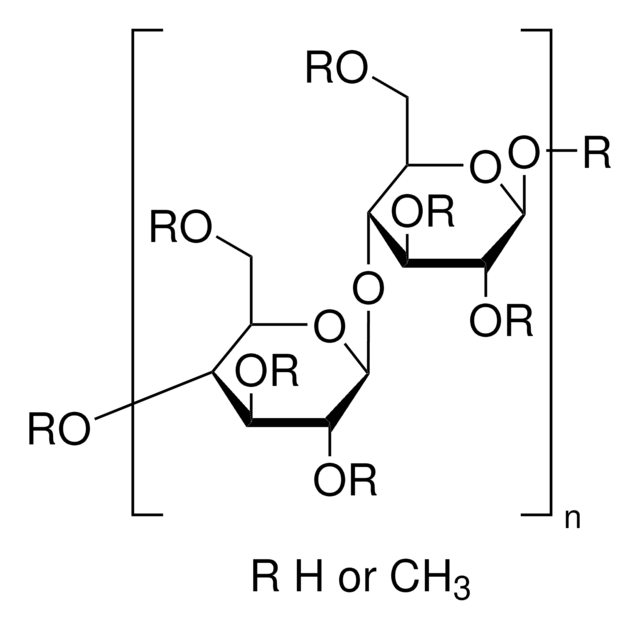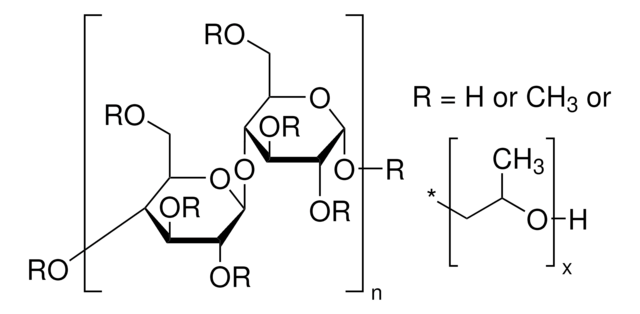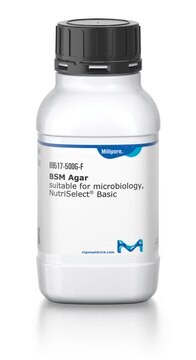93802
Tylose® MH 1000
viscosity 600-1500 mPa.s, 2 % in H2O(20 °C)
Sinonimo/i:
Methyl 2-hydroxyethyl cellulose
Autenticatiper visualizzare i prezzi riservati alla tua organizzazione & contrattuali
About This Item
Prodotti consigliati
Stato
powder
Livello qualitativo
Colore
beige
Viscosità
600-1500 mPa.s, 2 % in H2O(20 °C)
Temp. transizione
flocculation range 60-90 °C (0.5 wt. %)
Cerchi prodotti simili? Visita Guida al confronto tra prodotti
Applicazioni
Tylose®′ MH 300 and Tylose® MH 1000, methyl-hydroxyethyl cellose ethers (MHEC), are water-soluble non-ionic polymers used in materials to provide water retention, binding, thickening, film forming and colloid properties.
Altre note
To gain a comprehensive understanding of our extensive range of Polysaccharides for your research, we encourage you to visit our Carbohydrates Category page.
Note legali
Tylose is a registered trademark of SE Tylose GmbH & Co. KG
Codice della classe di stoccaggio
11 - Combustible Solids
Classe di pericolosità dell'acqua (WGK)
WGK 1
Punto d’infiammabilità (°F)
Not applicable
Punto d’infiammabilità (°C)
Not applicable
Dispositivi di protezione individuale
Eyeshields, Gloves, type N95 (US)
Scegli una delle versioni più recenti:
Possiedi già questo prodotto?
I documenti relativi ai prodotti acquistati recentemente sono disponibili nell’Archivio dei documenti.
I clienti hanno visto anche
Roland Adden et al.
Analytical chemistry, 78(4), 1146-1157 (2006-02-16)
Hydroxyethylmethyl celluloses (HEMC, DS(Me) 1.46-1.66, DS(HE) = 0.14-0.17) have been analyzed with respect to their methyl and hydroxyethyl pattern in the glucosyl units and along the polymer chain. Methyl groups were located by GLC/MS after direct hydrolysis, reduction, and acetylation
Su Jeong Ban et al.
Food and chemical toxicology : an international journal published for the British Industrial Biological Research Association, 50(5), 1716-1721 (2012-03-06)
The effect of hydroxyethyl methylcellulose (HEMC) with different viscosities on the glucose metabolism and antioxidative defense system in high fat-fed mice was investigated. The mice were randomly divided into five dietary groups: normal control diet (NC), high fat diet (HF)
Su Jeong Ban et al.
Food and chemical toxicology : an international journal published for the British Industrial Biological Research Association, 50(2), 130-134 (2011-11-01)
The effect of hydroxyethyl methylcellulose (HEMC), in comparison with hydroxypropyl methylcellulose (HPMC), on the body weight and lipid metabolism in mice fed with high fat diet was investigated. The animals were given normal control diet (NC group), high fat diet
S Zuleger et al.
International journal of pharmaceutics, 217(1-2), 139-152 (2001-04-09)
The present study deals with controlled drug delivery from hydrocolloid tablets by polymer particle erosion. The influence of excipients and formulation factors on the dissolution behaviour of the methyl hydroxyethyl cellulose (MHEC)-tablets is investigated. Linear drug release with low susceptibility
M G Lee
Journal of clinical and hospital pharmacy, 7(1), 67-70 (1982-03-01)
A method is reported for the analysis of prostaglandin PGE2 in methylhydroxyethylcellulose gel. Stability studies using the method have shown that the degradation of PGE in the gel is a first order process at 4 degrees and 25 degrees C.
Il team dei nostri ricercatori vanta grande esperienza in tutte le aree della ricerca quali Life Science, scienza dei materiali, sintesi chimica, cromatografia, discipline analitiche, ecc..
Contatta l'Assistenza Tecnica.